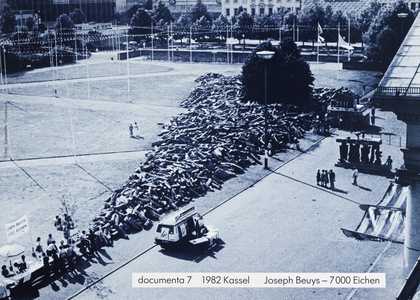
Joseph Beuys
7000 Oak Trees (1982)
ARTIST ROOMS Tate and National Galleries of Scotland
Social sculpture united Joseph Beuys’s idealistic ideas of a utopian society together with his aesthetic practice. He believed that life is a social sculpture that everyone helps to shape.
Many of Beuys’s social sculptures had political and environmental concerns. 7000 Oaks began in 1982 as a five-year project to plant 7000 trees in Kassel in Germany. It raised many questions about city planning, the future of the environment and social structures.
The concept of social sculpture continues today with artists like Pedro Reyes who collected 1,527 weapons from residents of Cuiliacán in Western Mexico, which were exchanged for electronics. The artist then melted the weapons down into shovels, which were used to plant 1,527 trees.

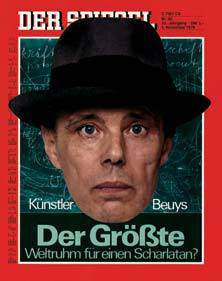
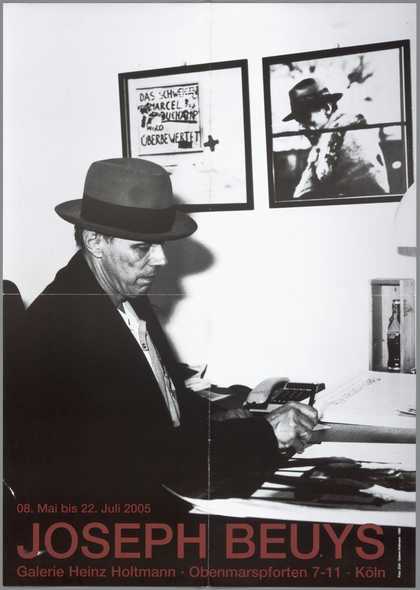
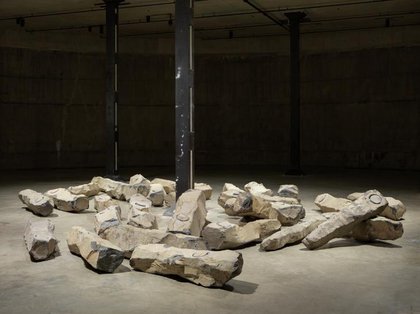
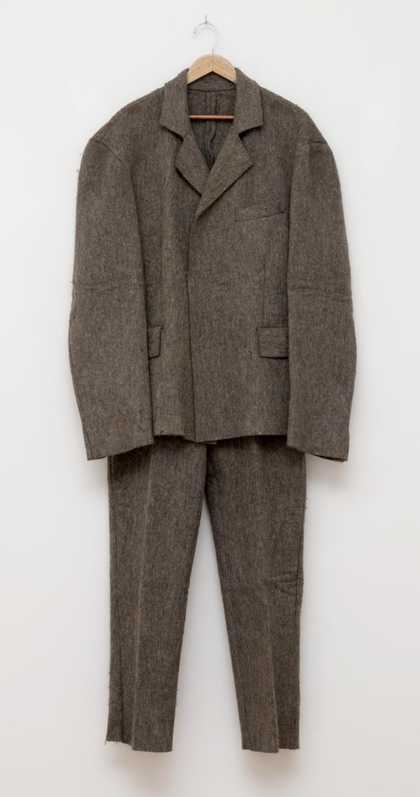
Joseph Beuys: Actions, Vitrines, Environments
Joseph Beuys: Actions, Vitrines, Environments, Tate Modern